Iolite Gemstone: Meaning, Properties, Healing Properties & More
Iolite is a violet gemstone with an optical effect that emits mesmerizing color changes that encapsulate the stone’s ability to help with adjustment and achievement. You know those days where you just can’t keep your head on straight? If those days have become a routine, iolite is the stone for you.
Have you ever heard of the legendary Norse voyager Leif Erikson? If not, let us introduce you. Long before Columbus, Erikson was thought to be the first European to make it to American soil. Legends say that Erikson and his Viking pals used iolite stones to navigate their way to the New World.
Today, we’ll be sharing everything that makes this twilight-colored stone special, from history to healing powers!
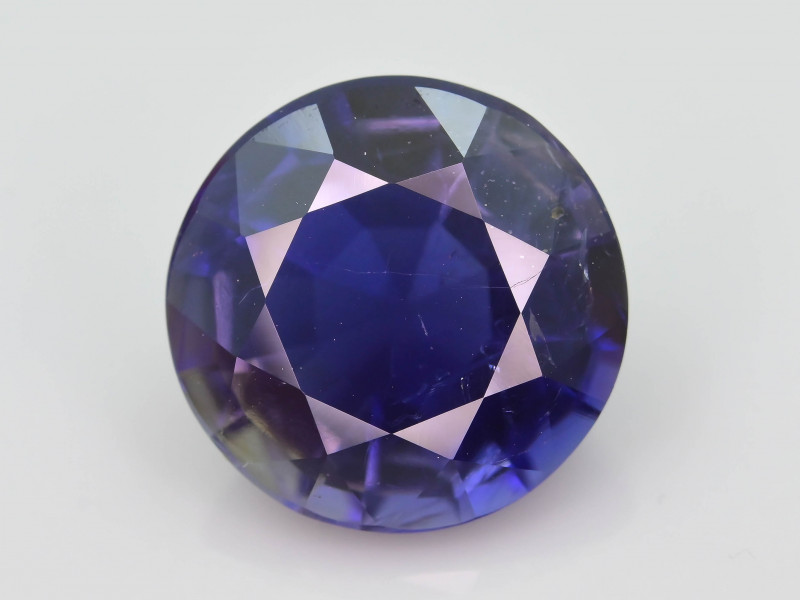
What Is Iolite?
Iolite is a unique violet-blue, semi-precious gemstone known for aiding travelers and dreamers.
Are you a Sagittarius? Iolite is your lucky zodiac stone! Since Sagittarius personalities are curious explorers who love adventure, iolite is perfect for expanding your imagination and encouraging you to push through obstacles.
Iolite gemstones have another cosmic connection to the planet Saturn, the responsible boss of the zodiac chart.
As a star stone for Saturn, iolite hones in your focus on how to get where you want to be. By letting go of the habits that hold you back and bringing in prosperity, an iolite gemstone can help you get to your dream financial and career standing!
Your career is meaningful, but we can’t forget relationships. Iolite is the traditional gemstone for the 21st wedding anniversary! Why not celebrate all that you’ve achieved together by gifting your partner some gorgeous iolite jewelry?
Mineral Characteristics
Iolite is the term for gem-quality specimens of cordierite, a magnesium iron aluminum silicate mineral. The stone is reasonably scratch-resistant, with a 7 to 7.5 ranking on the Mohs mineral hardness scale.
One of iolite’s most impressive features is its strong pleochroism. Based on the source of light and the viewing angle, you will see the stone shift color from violet-blue to light blue to yellow. The phenomenon gave iolite the earlier name of dichroite, ancient Greek for “two-colored stone.”
Many people mistake iolite for similar-looking stones like tanzanite and sapphire. In fact, iolite may be incorrectly labeled “water sapphire.” The most popular stone for comparisons to iolite is amethyst.
Iolite vs. Amethyst
Iolite and amethyst are often mixed up, as both stones are similar-looking silicates. One key difference is that amethyst is a quartz stone, while iolite is part of the cordierite family.
The simplest way to tell iolite and amethyst apart visually is by their color. Amethyst displays a rich, purple hue, while iolite’s violet hue has more blue-gray undertones.
Both amethyst and iolite commonly serve as alternatives to sapphire. Iolite and amethyst are much softer than sapphire, but both stones are much more affordable options.
Enough about other stones; it’s time to cover all the characteristics specific to iolite!
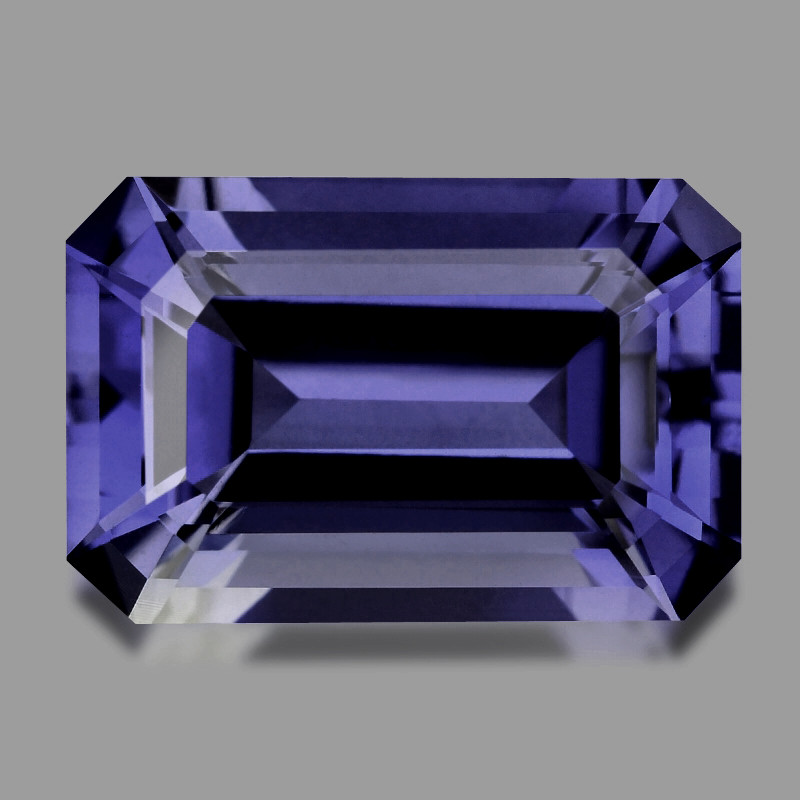
Iolite Specifications and Characteristics
Color: Violet-blue, gray, colorless/yellow
Crystal structure: Orthorhombic
Luster: Vitreous (glass-like)
Transparency: Translucent to transparent
Refractive index: 1.52-1.57
Density: 2.53-2.78
Cleavage: Distinct 1-direction; Fair on [100]; Poor on [001] and [010]
Fracture: Subconchoidal to uneven
Pleochroism: Present, strong; Lilac, deep violet, and yellow-brown for violet stones; Colorless, grayish-blue, and deep violet for blue stones
Chatoyancy: Sometimes present with specific inclusions
Let’s move from physical properties into spiritual properties. What does iolite symbolize?
Iolite Meaning
The name iolite comes from the Ancient Greek ion, which translates to “violet,” after the stone’s color. Iolite’s parent stone, cordierite, gets its name from the French geologist Pierre Louis Cordier.
One historical nickname for iolite is the “Viking’s Compass.” The moniker came from ancient sailors who used iolite’s pleochroism to determine the sun’s direction on overcast days.
That said, it comes as no surprise that historically, iolite symbolized direction and intuition.
Spiritually, iolite crystal represents a broader perspective, be it exploration, ambition, or self-awareness. Iolite’s spiritual nickname is the “Stone of Vision,” after all!
Shamans in various cultures use iolite to gain a clearer insight into their visions. Moreover, iolite represents the connection between the body and the soul, in particular.
On a more grounded level, iolite symbolizes self-acceptance and peaceful thoughts.
Given the stone’s symbolism, what is iolite good for in terms of healing?
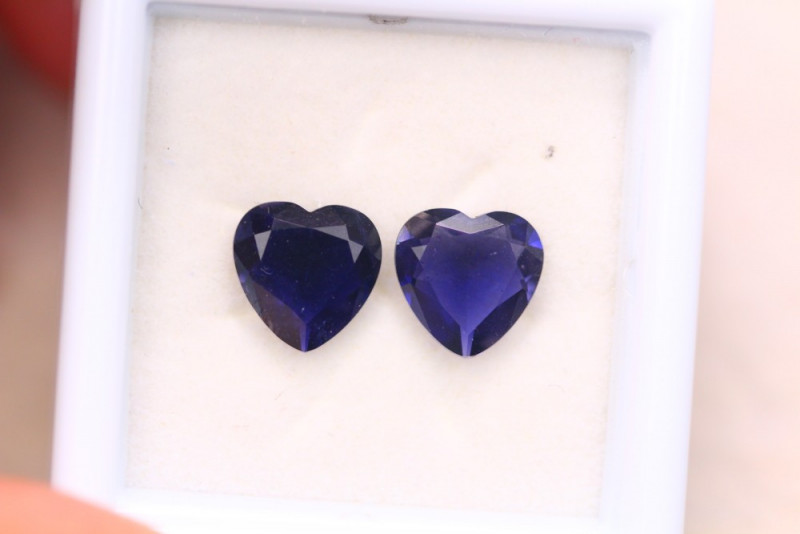
Iolite Healing Properties
The electrical vibrations swirling inside of crystals give them powerful healing energies.
As a purple gemstone, iolite represents nobility, mysticism, and wisdom. Other iolite gemstone benefits apply to a multitude of healing areas.
Physical Healing
Like its color companion amethyst, purple iolite can serve as a cure for overindulgence in alcohol by boosting the liver’s ability to filter out toxins. Beyond the liver, iolite can also boost the immune system to heal from disease or ailment.
Other physical iolite healing properties include easing migraines and insomnia. Try sleeping with an iolite gemstone on your bedside table or under your pillow to find sweet dreams in no time!
Emotional Healing
Emotionally, iolite metaphysical properties can shake you out of a funk and get you motivated again. If you suffer from brain fog and distraction, iolite can clear the mist and hone your focus.
Are you a creative soul? Maybe you find yourself staring at a blank page with frustration and self-doubt. Iolite can activate your creativity, helping you think outside the box and express yourself with self-assurance.
Chakra Healing
For energy healing, the iolite chakra graces the third eye. Located at the center of the forehead, the third eye chakra controls our awareness of what we want and how the world works.
When the third eye chakra is blocked, you may feel distracted or disconnected. After iolite opens the chakra, you can gain powerful reflection and insight into communication from the universe.
Want to try it yourself? We suggest holding an iolite tumbled stone or wearing iolite earrings since jewelry near the chakra works best.
Spiritual Energy
Iolite is a powerful stone for spiritual awakening. When you hold iolite during meditation, the stone can open your mind to connect your consciousness to the universe.
For those who feel cursed with bad luck, iolite can break the cycle and bring some well-needed good fortune into your life.
Before you purchase your stone, you’ll want to know what qualities to look for.
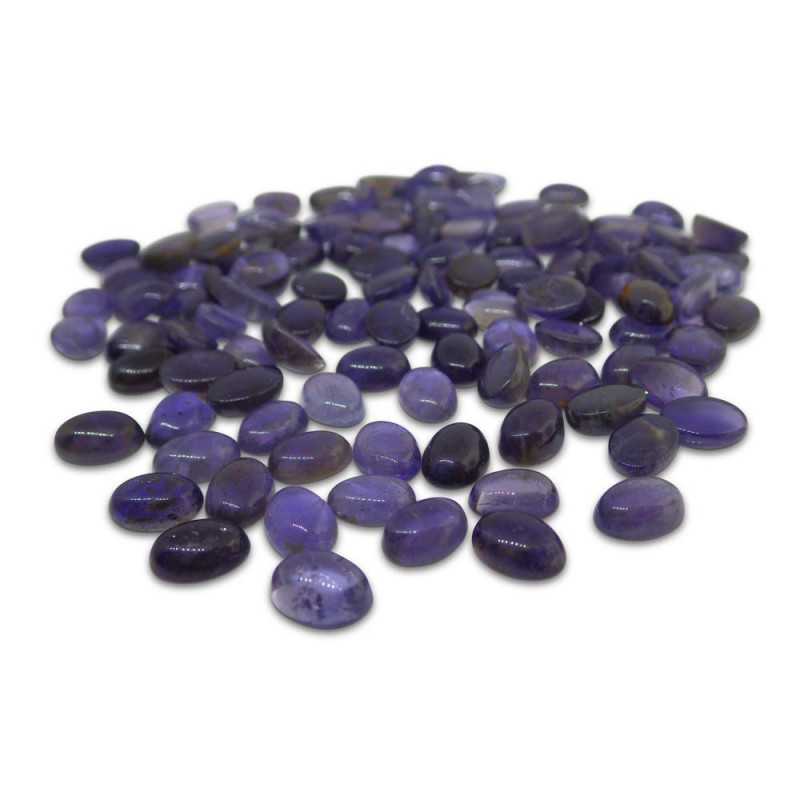
Iolite Gemstone Properties
Every gemstone’s value is based on specific properties. Knowing what traits to look for when buying a stone can help you shop with confidence.
In the case of iolite, the value factors include the stone’s cut, color, clarity, and carat weight.
Cut
Iolite hardness lends the stone to all sorts of cuts, with faceted cuts being the most common. Popular gemstone cuts include the cushion cut and emerald cut, which help the color shine, especially on an iolite ring.
Iolite beads and cabochons are popular as well. With the proper inclusions and cut orientation, iolite cabochons may show a cat’s eye effect.
Color
Iolite’s violet shade comes from a rich amount of iron. Most iolite stones have a washed-out coloration, but saturated specimens with a medium violet-blue hue are the most valuable.
Certain inclusions can affect iolite color. For example, red or reddish-brown hematite platelets create a spangled coloration that gives these specimens the moniker “bloodshot iolite.”
Clarity
Gemstone clarity grades refer to the number and visibility of inclusions present. For colored gemstones, an unofficial category system applies. Iolite falls under Type II clarity, meaning inclusions are typically present but minimal.
The most common inclusion for iolite is iron, which gives the stone its trademark violet hue. The iron levels may vary, resulting in different shades of violet or blue. Microporous iolite specimens sometimes contain nitrogen inclusions.
Some inclusions create optical phenomena, like hollow, tubular inclusions that cause chatoyancy. Platelet inclusions can give the stone asterism and aventurescence a reflective effect that resembles metallic glitter.
Carat Weight
Iolite can grow to be relatively large. The largest one (from Wyoming, USA) weighed in at 24,000 carats! Cut and polished iolite gems may come in sizes ranging from 1-10 carats. High-quality iolite stones rarely show up over 5 carats, and eye-clean specimens over 8 carats are very rare.
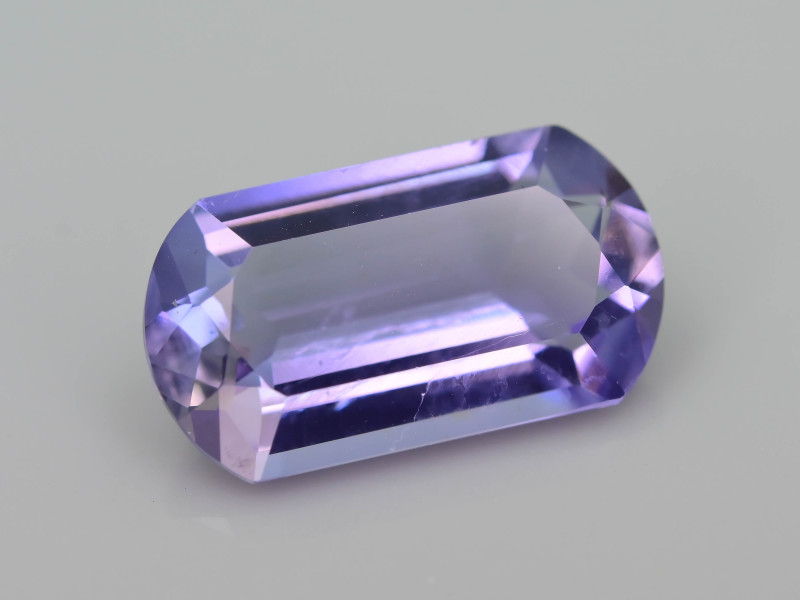
Iolite Stone History
As you know, iolite’s parent stone cordierite got its name from French geologist Pierre Louis Cordier. Cordier was the first person to study cordierite, discovering the mineral in 1813 among a group of specimens from Spain.
Adding to the monikers, blue iolite often goes by “steinheilite.” The name comes from Count Fabian Steinheil, the governor-general of Finland, who realized iolite was separate from quartz minerals.
Historians conjecture that iolite might have been among the first materials used to create polarizing lenses for primitive eyeglasses. Ancient Viking legends talk about explorers using iolite slices as visual filters when clouds covered the sun.
In Medieval times, stones like iolite that were used for finding the sun on overcast days were called “sunstones.” Another stone used at the time was a variety of transparent calcite called “Iceland spar.”
With clocks and GPS, we don’t need iolite to navigate anymore. However, manufacturing processes still use iolite!
If you drive a car, the chances are high that iolite played a role during production. Manufacturers use ceramics largely composed of iolite to make substrates for catalytic converters, the control device that makes exhaust emissions less toxic.
Why? Iolite minerals are highly resistant to sudden temperature changes and don’t expand much when heated. These iolite properties allow catalytic converters to work better and longer.
So, iolite helps form crucial car parts. But how does iolite form itself?

Iolite Origins and Sources
Iolite usually forms in regional metamorphic rocks. Regional metamorphism involves sedimentary rocks transforming into metamorphic rocks because of environmental shifts like pressure and temperature changes.
The rocks iolite forms inside of are usually magnesium-rich clays composed of aluminosilicates.
In some cases, iolite forms through contact metamorphism. Contact metamorphism changes rocks as well, but the process occurs from hot magma crystallizing within intrusions.
So, where in the world does iolite form?
Mining Locations
Germany was the first location where iolite was found, and the nation still has iolite mines. However, most iolite production today occurs in India, followed closely by Brazil, Sri Lanka, and Tanzania.
Interestingly, iolite is one of the few gemstones mined in Antarctica!
Other locations where iolite production occurs include:
Australia
Brazil
Canada
Madagascar
Myanmar
Namibia
Norway
Russia
United Kingdom
USA (Connecticut & Wyoming)
Iolite mines are all over the globe, which begs the question: is iolite rare?

Iolite Price and Value
Iolite is an abundant, beautiful gem sold at reasonable prices. Even mid-quality stones only cost $2-$14 per carat. Raw iolite is even more affordable, typically $0.20-$0.50 per carat.
The highest-quality stones between 1-5cts are roughly $60-$100 per carat. In the rarer 5-10ct range, the price increases to around $100-$150 per carat.
In terms of color, vibrant shades of medium violet-blue or sapphire-blue are the most valuable. The most valuable iolite clarity is transparent with few inclusions, and strong pleochroism is a must.
Alright, you’ve gotten so jazzed on this striking gem that you’ve bought an iolite stone. We can see why! But how do you take care of it?
Iolite Care and Maintenance
Iolite may have been used by sailors, but dropping it in water is a no-no. Iolite may dissolve or crack if it’s in water too long. You can clean the stone with a little lukewarm, soapy water and a soft brush; just don’t leave iolite submerged in water.
The stone’s distinct cleavage presents a risk for fracture, so it’s best to take iolite jewelry off during vigorous activities. You can leave iolite in the sun, but try to avoid direct sunlight hitting the stone on sweltering days.
Find Your Way With Iolite!
Well, readers, that covers everything you need to know about iolite gemstones! From navigation to manufacturing to healing, iolite uses are abundant. Iolite connects us to our soul and subconscious, guiding us toward the right path. If you’re worried about being behind on your dreams, we’ll leave you with this advice from author Stephen Covey:
“Live your life by a compass, not a clock.”
Shop for iolite gemstones from Gem Rock Auctions!
{{categories:}}
Was this article helpful?
Ross Sedawie
- Written - 16th Sep 2021
- Edited - 1st Aug 2023












